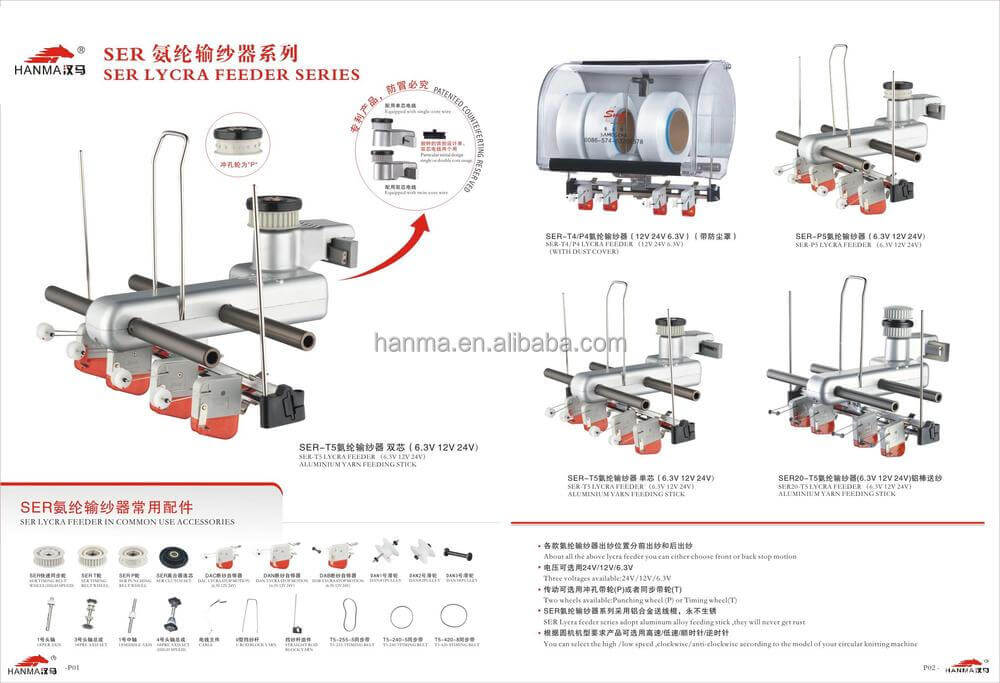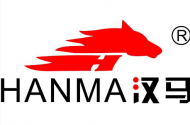
What is Lycra fiber ?
“Lycra” is a transliteration of the English word Lycra. As a kind of spandex elastic fiber, block molecular chain segment polyurethane is composed of flexible chain segment and rigid chain segment. It was successfully studied by Bayer of Germany in 1937 and produced by DuPont of the United States in 1959. It is a registered trademark of DuPont spandex fiber. Because it has many advantages and good quality, it is recognized by peers. Therefore, as long as Lycra’s clothes are adopted, there will be a triangular hangtag, which has also become a symbol of high quality.
Although Lycra fiber is a kind of synthetic elastic fiber, also known as spandex in the United States, and spandex and elastic fiber are the common name of the same substance, only Lycra company produces real Lycra ® (Leica) ®) Fiber.
So, what’s the difference between spandex and Lycra?
The difference between spandex and lycra
1) Lycra is a kind of spandex, but spandex is not necessarily Lycra
Lycra has better performance than ordinary spandex, has a special chemical structure, and will not grow mold in the damp and hot sealed space after wet water.
2) Spandex is a kind of high molecular compound elastic fiber
Spandex, also known as polyurethane fiber, has incomparable advantages over other fibers, such as light specific gravity, high breaking strength, high breaking elongation, good elastic recovery, and so on.
3) Lycra can stretch up to 500% and return to its original shape
The stretch of Lycra is much better than that of traditional elastic fiber. It can be stretched very easily, and can still cling to the surface of human skin after recovery, with little binding force on the human body.
Characteristics of Lycra fiber
1) Wide fiber fineness range
The fineness range of Lycra fiber is 22 ~ 4778 dtex, and the thinnest rubber wire is 156 dtex. Because the tension of Lycra is more uniform than other elastic fibers in the weaving process, the fabric containing Lycra has good flatness and soft feel.
2) Higher strength and elongation
The strength of Lycra is 2 ~ 4 times that of rubber wire. Because Lycra has greater elasticity than rubber wire under the same elongation, the fabric containing Lycra has higher elasticity.
3) High-temperature resistance
Elastic fabrics are generally made of a small number of elastic fibers mixed with other fibers. The heat setting and dyeing of conventional synthetic fibers must undergo high-temperature heat treatment, so the elastic fibers for blending must also withstand the high-temperature heat treatment. The heat setting temperature of Lycra silk can reach 195 ℃, while the maximum heat setting temperature of elastic fibers of other brands is 180 ~ 185 ℃. Therefore, under the same high-temperature conditions, Lycra-containing fabrics have more advantages in tensile rate and resilience than other elastic fabrics.
4) Low water washing shrinkage and growth rate
The washing shrinkage and growth rate of fabrics are the main factors affecting the dimensional stability and wrinkle resistance of ready-made clothes, and they are also important indicators reflecting the deformation of fabrics and ready-made clothes. The low shrinkage rate and growth rate of washing show that the shape retention of clothing is good and the fabric is not easy to deform and wrinkle.
5) Good stretch and resilience
Appropriate recovery and retention give the elastic fabric comfortable flexibility, shape retention, fitness, and formability. Leica can stretch 7 times longer without breaking; retraction is also very good. When the elongation is 50%, the retraction rate is more than 99%; When the elongation is 200%, the retraction rate is 97%; Even when the elongation is 500%, the retraction rate is more than 90%. The size of the shrinkage rate is related to the yarn thickness. The thicker the yarn, the greater the resilience.
6) Dyeable
Lycra can be dyed with acid, metal complex, reactive and disperse dyes, while rubber silk is not easy to dye.
7) aging resistance and not easy to yellowing.
Spandex filament fabrics or processed garments will produce yellowing over time, which will be yellowed by repeated use or washing. The elastic blanks containing Lycra are placed for three months, and their whiteness is much better than that of other spandex fabrics. The whiteness is better than that of the ordinary products 10%~20%, and has good aging resistance.
8) Good wear resistance
In the elongation range of 50% ~ 300%, 200 fatigue tests per minute can withstand more than 1 million times without breaking, while the rubber has only 240000 times.
9) Good light resistance and chlorine resistance
The strength of Lycra decreased by about 20% when it was irradiated in the light fastness tester for 40 h. The rubber wire is also irradiated, resulting in aging and loss of strength.
Lycra has a certain resistance to general chemicals, but it is relatively sensitive to chlorine (such as NaClO bleach), which makes the fiber yellowing and damage, making it lose elasticity and extensibility, which is one of its main disadvantages. It is stable for oxygen-containing bleach.
Extensive use of Lycra
Lycra mainly appears in the form of core-spun yarn / wrapped wire / coated wire and bare wire in fabrics. It has good dyeing performance and wearability and has been widely used in various fields of textile production. Its application in the garment industry is also very common, from light and thin close-fitting underwear to heavy coats, from sportswear to fashion suits, and so on.
1) Lycra with different fineness can be used in different fields
The fineness range of Lycra fiber is 22 ~ 4778 dtex. Lycra with different fineness can be used in different fields.
Transparent silk stockings: 11 ~ 44 dtex;
Weft knitted fabric: 22 ~ 195 dtex;
Warp knitted fabric: 22 ~ 78 dtex;
Woven fabric: 44 ~ 156 dtex;
Leggings: 78 ~ 156 dtex;
Warp knitted fabrics for brassiere: 156 ~ 540 dtex;
Narrow belt and belt: 156 ~ 1880 dtex;
Medical articles: 156 ~ 1880 dtex;
Footwear: 620 ~ 940 dtex.
2) Lycra has different functions in different fabrics
Lycra has outstanding stretch. For knitwear, its multidirectional extension is determined by the fabric itself. Lycra brings only the elasticity of stretching and recovery. Woven fabrics have ductility only in the direction of weaving into Lycra, such as warp knitting (straight line) or weft knitting (horizontal line).
In woven fabrics: Lycra is used for warp yarn, and the fabric has extensibility in the longitudinal direction; For the weft, the fabric has transverse elasticity; If Lycra is used in both warp and weft yarns, the fabric has two-way elasticity.
In knitted fabrics: in weft knitted fabrics, Lycra bare silk is used for light plain knitted fabrics; Lycra coated yarn is used for cuffs of socks and knitted pullovers; Core spun yarn is often used in light plain knitted fabrics for knitted pullovers and underwear; Wrapped yarn is often used in rib knitted fabrics. Lycra is mainly used in warp knitted fabrics to increase the extensibility of the fabric and make the clothing have excellent applicability and comfort.
In narrowband fabrics: narrowband fabrics are widely used in underwear and clothing belts. Lycra provides high-performance elasticity with long-lasting and comfortable ribbon fabric. It can be used to produce the decorative belt of thin and exquisite modern ultra-light women’s underwear to improve and maintain its shape and body shape.
Advantages of Lycra for clothing
1) Good stretch and elasticity, not easy to deform
Lycra is composed of spandex fiber, which can enhance the elasticity of the fabric and can be combined with a variety of different fibers. Whether natural or man-made fibers, they will not change the appearance and texture of the fabric. For example, wool + Lycra fabric has good elasticity, better shape fit, shape retention, durability, and washability; Cotton + Lycra not only has the advantages of comfort and air permeability of cotton fiber but also takes into account the characteristics of good elasticity and not easy to deform that cotton does not have, making the fabric closer to the body, fit, soft and comfortable. Lycra can add unique advantages to clothing, such as close-fitting comfort, free movement, and long-term shape.
2) Lycra can be used in any fabric
Lycra fabrics are widely used. They are generally not used alone, but together with other fabrics, and can be used in any fabric, such as cotton knitted fabric, double-sided wool fabric, silk poplin, nylon fabric, and different cotton fabrics.
3) Leica comfort
Lycra fabric has good extensibility and will not make people feel depressed and uncomfortable. It is soft, comfortable, and breathable when combined with cotton, knitting, and other fabrics. Wearing clothes containing Lycra fiber is comfortable, fit and move freely, realizes the unity of appropriateness and comfort, and meets the needs of people in contemporary society.
4) The influence of Lycra on style
The clothes made of Lycra fabric are beautiful and diverse. After Lycra is added to the clothes, the close-fitting clothes are not tight; Clothing has a degree of opening and closing, fits without restraint, and has better drapability; Children’s clothes are full of vitality and can jump freely after wearing. Even the rigorous production of suits and coats will not have the slightest sense of urgency and cramped. The addition of Lycra to knitted fabrics such as sweaters, underwear, and bodybuilding pants will be both fit and comfortable and can stretch freely and move whenever you want.
5) Design features of Leica
Whether it is loose or slim design, it is comfortable and natural to wear; Good drapability, no wrinkle, not too loose, and perfect fit, fully reflecting the beauty of simplicity and generosity; Enjoy it closely at all times, and it is fashionable and beautiful.
Disadvantages of Lycra fabric
Lycra fabric has inherent defects. First of all, a Lycra fabric must be blended with other fibers to form, otherwise, it is difficult to become a fabric that can be used directly; Secondly, Lycra fabrics are slightly less soft than those made of modal, pure cotton, and other materials; Finally, Lycra fabric has a short service life. At the same time, attention should also be paid to the maintenance and cleaning of Lycra fabrics. It is best to use ordinary neutral cleaning products for cleaning.

